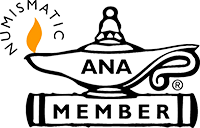1946 Nickel Value: Investment Insights and Market Trends
By Bullion Standard ·
5 min read

Professional male stock broker monitors online trading, analyzing charts on multiple computer screens.
Unearthing the Legacy of the 1946 Jefferson Nickel
The 1946 Jefferson Nickel holds a prominent place in numismatic circles, embodying both an era of rich history and intriguing collectibility. Coin collectors not only see this as a valuable hobby but also recognize its potential as a strategic investment opportunity. This article dives into the value and evolving market trends of the 1946 nickel, offering insights into how such coins can enhance broader investment portfolios.
Understanding the Value of a 1946 Nickel
The value of a 1946 nickel often hinges on its condition and rarity, with terms like "mint state" and "grade" playing critical roles. A coin in mint state has not experienced wear and retains its original aesthetic, making it significantly more valuable. Grading services assign grades to coins, reflecting their condition and augmenting their marketability.
Contrary to misconceptions, the 1946 Jefferson Nickel contains no silver. Made predominantly of copper (75%) and nickel (25%), this composition marks its departure from the wartime silver content used in nickels minted from 1942 to 1945. Market demand largely drives valuations, influenced by historical significance and rarity, with specific mint errors or mint marks adding to desirability.
Key Characteristics of the 1946 Jefferson Nickel
- No Silver Content:
The 1946 nickel is composed of copper and nickel, lacking any silver content. This myth about silver should be dispelled, concentrating instead on its historical and numismatic value.
- Mint Marks:
Common mint marks like "D" for Denver affect the value of these nickels. The absence of a mint mark typically indicates production at the Philadelphia mint. Rarer mint marks can significantly boost a coin's worth.
- Error Coins:
Notable minting errors in 1946 pique collector interest. Errors like double strikes or off-center strikes enhance rarity, making them valuable niche collectibles.

Evaluating a 1946 Nickel: A Collector's Guide
- Grading the Coin:
The grading process is paramount in evaluating a coin's value. Professional grading services assess various factors including mint luster, strike quality, and any visible wear, thus assigning a standardized grade.
- Identifying Rare Mint Errors:
Becoming adept at spotting mint errors can unveil remarkable numismatic finds. Look for double strikes or off-center details, as these errors often add significant value due to their rarity.
- Assessing Market Trends:
The market for 1946 nickels has evolved with shifts in collector interest and historical relevance. Understanding these trends is crucial, as broader economic conditions and collector demographics impact their market trajectory.
Pros and Cons of Investing in 1946 Nickels
Pros:
- Historic and Collector Interest:
The historical intrigue and enduring collector interest often stabilize demand, making 1946 nickels a viable investment.
- Limited Availability:
The finite number of high-grade and error coins can elevate their market value significantly.
- Tangible Asset:
Coins offer tangible historical significance and educational insights, enriching the investment experience.
Cons:
- Niche Market:
The relatively niche market can result in less liquidity than more common investments, such as securities or commodities.
- Numismatic Expertise Required:
Accurate valuation demands numismatic knowledge to avoid errors in pricing or overvaluation.
- Price Volatility:
Fluctuating market conditions, influenced by collector interest and broader economic factors, can introduce volatility.
Unlocking the Potential of 1946 Nickels in Your Investment Strategy
The 1946 nickel's numismatic value offers compelling insights for collectors and investors alike. By understanding its historical significance, key characteristics, and the dynamics of coin grading, one can make informed decisions to include these coins in a diversified investment strategy. Consulting with numismatic professionals enhances one's ability to recognize true value and potential areas for growth within their portfolio.
Frequently Asked Questions (FAQ)
1. What factors influence the market value of a 1946 nickel, and how do these factors affect investment decisions?
The condition, rarity, mint marks, and market demand significantly influence the market value, impacting decisions on when to buy or sell.
2. How has the value of 1946 nickels changed over time, and what market trends should investors be aware of?
Values have shifted with historical interest and changing collector demographics, affecting investment strategies.
3. Are there specific mint marks on 1946 nickels that can increase their value, and how can investors identify them?
Yes, mint marks like "D" for Denver can increase value, which can be identified by examining specific locations on the coin.
4. How can investors effectively leverage numismatic insights to make informed decisions about buying and selling 1946 nickels?
Understanding grading systems, market trends, and historical data enhances decision-making processes, particularly when consulting with experts.
5. What role do 1946 nickels play in a diversified investment portfolio, especially in comparison to traditional bullion investments?
1946 nickels can offer diversification, historical interest, and potential appreciation that differ from traditional assets like gold bullion.
Prepare Your Investment Portfolio with Numismatic Treasures
The allure of the 1946 Jefferson Nickel is more than just its historical significance; it's a unique investment opportunity that numismatists and collectors can truly appreciate. By understanding market trends and the intricacies of coin grading, you can add not only a piece of history to your collection but a potentially rewarding asset to your portfolio.
Ready to explore the world of numismatic investments further? Discover how rare coins like the 1946 nickel can transform your investment strategy. For insights into more tangible assets, visit our Bullion Standard home page.





















